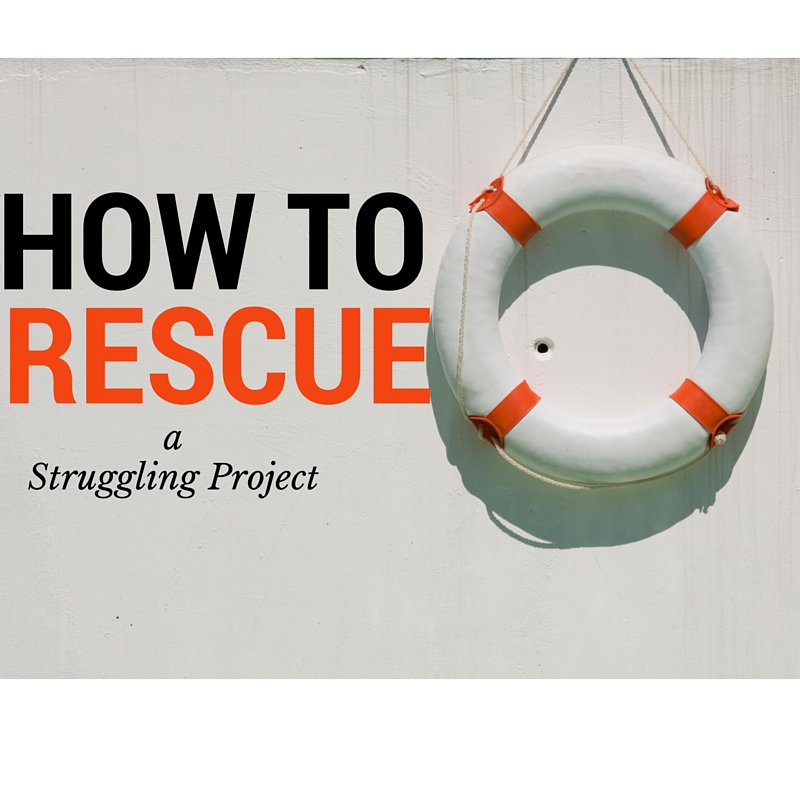How do some entrepreneurs, authors, and business owners seem to pull off successful projects and yet barely seem to break a sweat? They make it look easy, while the rest of us are left wondering how we could duplicate their project success. How can we learn from them and manage our projects more effectively? Let’s remove the mystery. Here are 15 tips for effective Project Management.
1. Begin with the end in mind.
What is the critical date you must hit? When does your product need to launch? Are you trying to get it on store shelves in time for the holidays?
If you don’t have a firm date, pick one. Work backward from there to plan out your work activities. You’ll find this much easier than trying to start planning from scratch.
2. Create a blueprint (also known as a Project Charter).
When you are building a house, you need a blueprint. Same goes for projects. What are you doing and how? What will the end result be?
A project charter should be a one-page document that helps you understand the big picture. Why are you doing the project? Who’s funding it? Who are the people that will get the work done?
Here’s a simple example of a Project Charter I used for a book project. You can create something similar or search Google for charter templates. Assembling this overview helps you think about the purpose, audience, budget, and resources of your project.

A simple project charter helps maximize your book success.
3. Create a project plan to track all tasks.
Your project plan defines what tasks need to happen to complete the project. For each task, you need to plan when it gets done, by whom, and how long it will take.
There are many project plan tools on the market. I recommend a simple excel or Google Sheets that has the following columns:

Simple project plan using Google Sheets
When creating your project plan, break down the work into smaller chunks. Let’s say you want to build a website. First, you need the strategy behind the site (e.g., what is the purpose, who is the audience, and how will you measure success?).
Once that’s in place, what needs to happen first. You need to hire a designer, create a design or site map, write content, and so on.
Strategy/goal —> step 1 —> step 2 and on.
Part of building a project plan is estimating how long tasks will take. If a given task takes more than 2 weeks to complete, it should probably be broken down further.
4. Don’t do work that’s not in the plan.
I learned this tip from a PM mentor. You’ve heard of scope creep? This means the “what” of your project gets added to until it gets out of control and you end up over budget, delayed, or worse.
If a task exists, it should go into the project plan. Or into a PM tool like Basecamp. If your team is doing work that’s outside the plan, you have a problem with scope creep.
5. Communication is 90% of the Project Manager’s job.

Can you hear me now?
According to the Project Management Institute, 90% of the work that Project Managers do is communication. When managing a project with many moving parts, there’s a lot of communication that needs to happen.
First, people need a heads up that work is coming their way. As much as possible, look at the next 30-60-90 days and let people know what work is expected so they can plan ahead. This separates the pros from the amateurs. Don’t be the entrepreneur who throws work at people with little notice and expects a quick turnaround.
Every project represents change. Keep the team posted on your progress, expected benefits, and potential problems.
Consider your stakeholders–anyone affected by the project (e.g., team, customers, consultants, affiliates, etc.). Even your competitors can be a stakeholder. How will they react to what you’re doing?
6. Be proactive vs reactive.
Taking time to plan helps us avoid the reactive, constant fire-fighting mode that many small businesses seem to get stuck in.
When you’re rolling out a new product launch or creating a new website, have you considered how you’ll handle customer service? How will you train your support staff and how will you handle a spike in requests from customers/end users?
In my experience seeing projects in corporate America, in start-ups, and with entrepreneurial clients, it’s usually customer service and training that is often overlooked. It gets pushed to the backburner because the focus is on getting live.
Testing can also be missed. Make sure you have a good plan in place for proper testing.
7. Understand dependencies.
If you’re selling a product, it needs to be built and tested. You can’t launch until you build the website.
What is the critical path of your project? What is vital to the success of the project? For example, if you’re an author launching a book, you need to finalize the book with the publisher before you can launch. Without a quality book, nothing else gets done.
8. Keep yourself organized.
I believe 80% of being a good Project Manager is staying organized. Have a system for processing your emails. If there is new information or requirements coming in, have an intake process and a way to get them turned into tasks in the project plan.
Organize yourself so that repetitive tasks are easy for you to find. For example, I keep a daily checklist for each client project and start off each day with that list so I can quickly get a sense of progress and the day’s burning issues.
Keep track of website links in your plan. If you won the lottery tomorrow, could you hand off your project plan to someone with no previous knowledge of the project?
Software tools like Basecamp are a great way to track tasks, collaborate with a team, and delegate.
9. Adopt a positive mindset.
The most successful projects I’ve seen have all had this in common: they had Project Managers and leaders (sponsors) who had positive mindsets.
The most successful project leaders are optimistic, patient, proactive, great listeners and communicators, and are strategic.
10. Adjust if something is not working.
Successful projects require being able to shift quickly. For example, monitor sales for your new product launch to determine if something is not working with your strategy.
Or maybe a team member is not comfortable with the tasks assigned to him or her, and you may need to assign them to someone else.
11. Use data and facts to make decisions.
The most effective projects have leaders who stay focused on reaching the goals that were outlined in the Project Charter. They don’t jump go chasing after the next shiny object.
Whenever you’re in doubt, always go back to the Project Charter. What is the expected ROI of the project? Why are we bothering to do this in the first place?
Often, new requirements will come up, “Hey, wouldn’t this be a great feature to add?” Look at the charter to help guide your decision. Will it add to your goals or will this be a distractor? You can always delay features to a later release.
12. Put repeatable processes in place.
Think ahead to how you can make your future projects even better. As you launch a new product, document the activities into a checklist so that going forward, you’ll have a list of everything you need for more launches. Don’t reinvent the wheel every time.
Likewise, your project will have ongoing work that can be documented using Standard Operating Procedures (SOPs). Make sure there’s a transition plan for your project. You don’t want your Project Manager stuck doing operations or customer support. You want them managing more projects for you.
13. Consider risk and put contingency plans in place.

Plan for problems now to avoid headaches later.





Leave A Comment